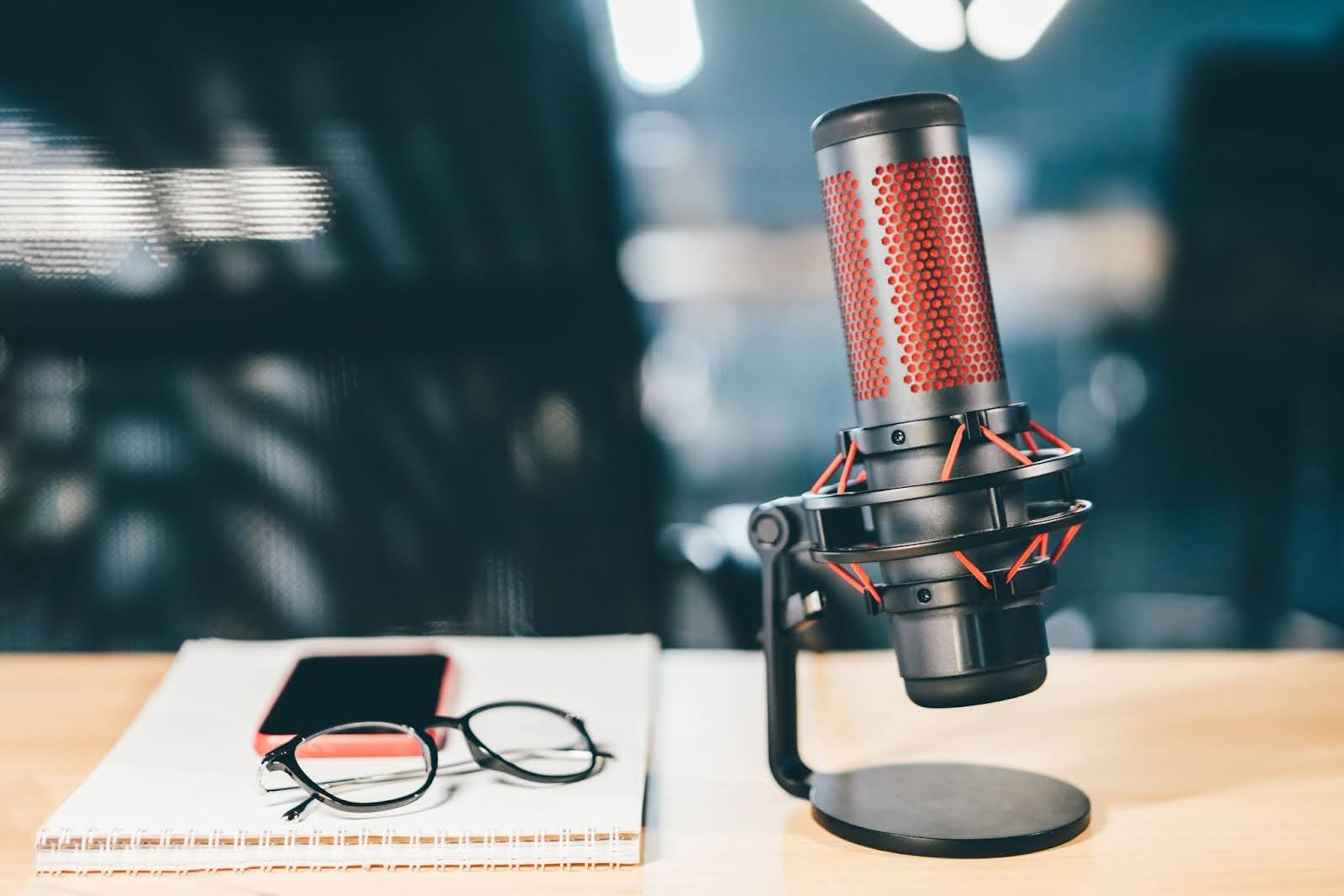In a world saturated with podcasts, standing out can seem daunting, especially starting from scratch. With 47% of podcasts only producing three episodes or less, it can be easy to fall into the dreaded Podfail.
However, with the right strategy, launching a successful podcast and making it past episode 3 with no existing audience is entirely feasible. This is a step-by-step guide for aspiring podcasters to navigate the initial stages of podcast creation and attract listeners from the ground up.
Choosing Your Podcast Topic

How hard is it to start a podcast? It's easier than you'd think! Selecting a podcast niche is the first step to creating a great show that attracts a podcast audience. The key to choosing a great topic is choosing something you're passionate about. Knowing your topic is key to becoming one of the most successful podcasters because the audience will feel it if you're passionate about what you're talking about.
To kickstart this process, jot down topics that genuinely excite you and align with your knowledge base. Think about the subjects that light a fire within you, whether it's the mysteries of the universe, the intricacies of art history, or the latest technological trends.
You could talk about these podcast topics for hours on end, fueled by your genuine curiosity and enthusiasm. Focusing on what genuinely interests you will create a podcast that you're proud of and resonates with your audience on a deeper level.
Identifying Your Target Audience

Identifying your podcast’s target audience is vital to its success when starting a podcast with no audience. Identifying audience demographics will allow you to create high-quality content that resonates with potential listeners, meaning they will tune in episode after episode. Creating high-quality content and using strategies like collaborations and podcast trailers can attract new listeners by targeting specific audiences and making it easier for potential fans to engage with the content.
There are a few ways to ensure the success of your podcast episodes when you start with no audience. Here are the top ways to find your target audience and make it happen!
Know Your Listener
Pinpointing your podcast listeners can be tough, especially when learning how to start a podcast with no audience. However, it's easy with a few simple techniques. The first way to do this is to get into the mind of your dream listener.
To do this:
- Consider the topic of your podcast and who would likely listen to it.
- Create a listener profile outlining the kind of person you envision listening to your podcast episodes.
- Include the age range, gender, occupation, location, salary band, etc., of your ideal listener.

Data-Driven Insights
Data and analytics can provide valuable insights into finding your potential audience and planning your podcast content. One way to do this is to analyse competitor podcasts and take insights from their listeners and fans. Look at their listener demographic, engagement, and how successful their marketing strategies have been, such as marketing across social media platforms.
Analysing competitor data can be extremely valuable for making informed decisions about your marketing strategies, suitable podcast demographics and potential listeners, and content creation ideas.
Podcast Branding Starting From Scratch
Podcast branding and design are essential to ensuring your podcast succeeds! Presenting your podcast as established and professional will attract listeners and grow your fanbase. Spend time choosing a colour palette that aligns with your niche and designing a logo for your podcast.
This step includes designing the cover art for your episodes. If you're not experienced in graphic design, designing podcast cover art can be difficult, so you can outsource this to a freelancer if necessary.
Creating your brand establishes your visual identity. Take the time here to set yourself up for success and draw in new listeners.
How to Start a Podcast with No Audience: Podcast Budgeting
How much does it cost to start a podcast with no audience? There are costs associated with creating a successful podcast. Let's look at what to consider when budgeting for your new podcast.
Equipment and Software
The main expense of podcasting is recording equipment. Popular podcasts invest in equipment and editing software to enhance audio and video quality. There are plenty of microphones for podcasters on a budget, but choose wisely! A high-quality microphone will make a massive difference in the sound quality of your podcast.
Want to learn more? Check out our blog post: What is a condenser microphone?
Video Podcasts
Video podcasts can be particularly expensive due to the investment in staging the recording studio with furniture and decorations, video cameras, microphones, and more. However, video podcasts are fantastic for reaching a broader audience. Video content also allows listeners to build trust and engage with the podcast host by seeing them conduct interviews or record solo podcast episodes.
Marketing and Growing Your Podcast Audience
Many podcasters also invest in their marketing efforts, outsourcing marketing to freelancers or marketing management businesses. Ensuring social media channels have a rolling podcast content plan is essential, as social media posts are vital for engaging with new and core audiences.
Social media plays a significant role in podcast promotion, and utilising platforms like TikTok and Instagram for creative teasers and interactive content can attract more listeners. Managing your social media accounts can be time-consuming, so investing in a social media manager can be a great option so that you can focus on podcasting.
Planning Your Podcast Format

Deciding on the structure of your podcast episode is essential for creating a high-quality episode. Create a format for each type of episode you'll record, for example, solo episodes, panel discussions, and interviews with podcast guests.
To plan your podcast format, you must outline the topics to discuss, the episode length, and the questions to ask your guests. On average, solo episodes should be 10-30 minutes long, and interview episodes should be 20-40 minutes long. Remember to include advertisement breaks to work in your affiliate marketing deals and a call to action (CTA) at the end of your episode to like, subscribe, and leave a review. Listener comments are priceless when you start a podcast with no audience, adding value for potential listeners.
Setting Up Your Podcast Hosting Platform

Choosing the right podcast hosting platform is crucial for a successful podcasting journey. It's essential to pick a platform that aligns with your budget and technical needs to ensure your episodes' smooth operation and distribution.
Saspod is a fantastic option for podcast hosting, providing affordable plans without compromising on quality. With Saspod, you can launch your podcast without breaking the bank, allowing you to focus on creating great content while effectively reaching your audience.
Successful Podcast Marketing
Affiliate Marketing
Podcast affiliate marketing lets podcasters monetise their content without relying solely on advertising. Partnering with relevant brands allows podcasters to earn commissions for sales generated through their recommendations, creating an agreement that benefits both the brand and the podcaster.
Affiliate marketing can allow the podcaster to create and maintain authenticity and trust by choosing products that genuinely align with their values and can benefit listeners. Affiliate marketing also lets you start earning when you gain listeners, building your brand and business from nothing to something spectacular.
Email Newsletter
Effective marketing campaigns always include email marketing. Email marketing with podcasting is a great way to inform your audience about the latest episodes, special events, and more. Sending podcast newsletters to your followers via email is one of the most effective marketing strategies for maintaining a loyal audience of listeners.
However, building an email list without an existing audience can be tricky. To build an email list, you can offer subscribers something free of value, such as a downloadable PDF, premium access to exclusive content, a token gift, such as a downloadable ebook, and more.
Social Media Marketing
Social media marketing is the best way to reach new audiences and build your podcast brand online. Gaining social media followers when starting out can be challenging, but consistency is the key to gaining followers. Many successful podcasts began with no existing audience and achieved notable success through resilience, quality content, and strategic marketing.
Consistently posting high-quality content while utilising hashtags and engaging with followers builds a solid social media presence and will grow your following. Video snippets are particularly effective for social media marketing. Reaching target listeners can be easy with the right tactics, so create content with your target demographic in mind and post at least once per week.
Social media scheduling tools are fantastic for creating a plan. Many offer a content calendar with various insights on how to grow your audience.
Reviews
Reviews can be overlooked as a part of podcast marketing, but reviews can be an excellent tool for growing your podcast audience. At the end of every single episode, invite listeners to leave a positive review and encourage them to get involved with the conversation by asking questions, sharing their thoughts and opinions, and telling you what they liked about the episode.
How to Start a Podcast with No Audience: Saspod's Expertise!
Launching a podcast from scratch may seem daunting, but with careful planning and execution, it's entirely achievable. Following the steps outlined in this guide, aspiring podcasters can lay the groundwork for a successful podcasting journey, even with no existing audience.
Are you ready to create podcasts and grow an audience? At Saspod, we can help you get started today and get in touch for a FREE consultation.


Comments
No comments yet!